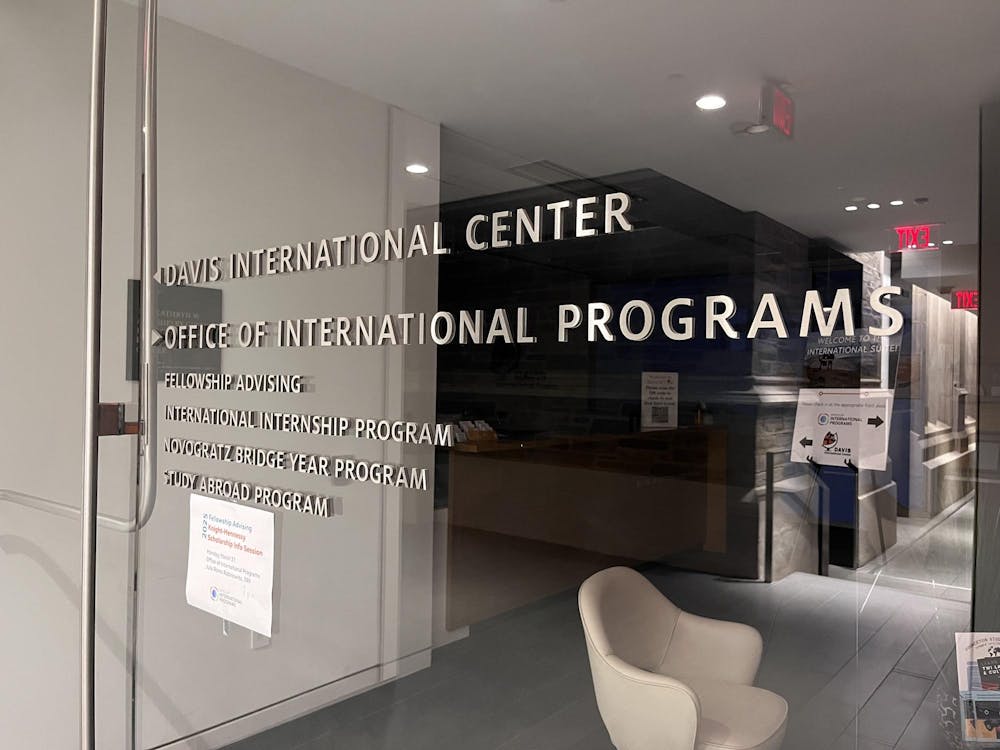Fountainhop, which was released Sept. 12, and Scoop, set to launch within weeks, are both vying to become the central forum for students to post and look up events in real time.
Nick Simmons ’12, who spent last summer conceiving and spearheading the development of Scoop, an iPhone application and website, explained, “There are parties at the Street and you don’t know which ones are better without going. There are sporting events, free stuff, study breaks — but there isn’t one place where you can go to talk about all these things.”
Fountainhop — initially developed by four Stanford students and already operational at Stanford, Harvard and University of California, Berkeley — has been brought to Princeton by a trio of sophomores.
Zavain Dar, the co-founder of Fountainhop and a 2010 Stanford graduate, said the application originated from the idea that “how you spend your time ... seems to be contingent on where you are, where you friends were and what events were going on.”
Fountainhop also allows users to automatically make their locations public or post their location as a status update on their Facebook profile.
“It’s all in your own control and you decide how much you want to use it,” explained Sofia Quinodoz ’13, who implemented the launch at Princeton with friends Bohao Liu ’13 and Patrick Morton ’13. “At the same time, it’s really useful to know where your friends are,” she added.
The three spent their summers troubleshooting, product testing, and talking with eating clubs, residential colleges and other groups about getting their events posted on Fountainhop.
“Fountainhop has a map which can tell you where everything is,” Liu said. “That’s really nice for the freshmen, as they can tell exactly where they’re going.”

Dar, along with three other Stanford graduates, created Fountainhop in 2009 to “make a more accurate, engaging way to make better decisions on what to do with our time,” he said.
Unlike Foursquare, a smartphone application open to anyone, Fountainhop requires a Princeton netID to post events. Scoop requires users to log in with their Facebook accounts. On Fountainhop, users submit the time, location and other details about events, which are then time-sorted and color-coded by category. On Scoop, students simply type out a message that is displayed to all users.
Students who worked on both applications stressed that they are different from existing sites.
Whereas Point focuses on scheduled University events, Scoop aims to publicize informal student events, Simmons said. “It’s great to know that the foreign minister of Pakistan is coming to speak at Robertson Hall, and that’s really important information that we want people to talk about on Scoop, but the kind of information that drives traffic is about what pass Ivy is on that night, or how good the party in Quad is,” he explained.

“A lot of us are too lazy to actually look up what’s happening,” which students have to do on a site like Facebook, Quinodoz said. “If you create an account you get a daily e-mail about events, and that just brings the information to you to.”
Simmons claimed that the closest existing alternative to Scoop for rapid information exchange is text messaging. “There’s no place that has all the parties and things that are going on on a campus like Princeton’s,” Simmons said, adding that Scoop aims to imitate a service like texting “that makes people want to respond, and respond fast.”
Though Scoop and Fountainhop offer similar services, Simmons said the applications may have a significant difference. “It seems like the types of events Fountainhop is broadcasting is different from the kind of stuff we want to broadcast, and a little bit less interactive than we want to be, so I don’t know if we are in direct competition,” he said.
Fountainhop attracted nearly 250 members in its first week, Quinodoz said.
Simmons developed the application while working for Trumpet Technologies, which has received funding from Google chief executive Eric Schmidt ’76. Simmons is listed on Trumpet Technologies’ LinkedIn account as the president of Scoop.
The students are still tweaking both programs. Quinodoz noted that Fountainhop’s creators are working on syncing the application with the iPhone’s internal compass and better distinguishing between different categories of events.
Simmons said that Scoop may expand beyond Princeton, depending on user feedback. “We want to make sure we build a product that Princeton students love,” he said.







